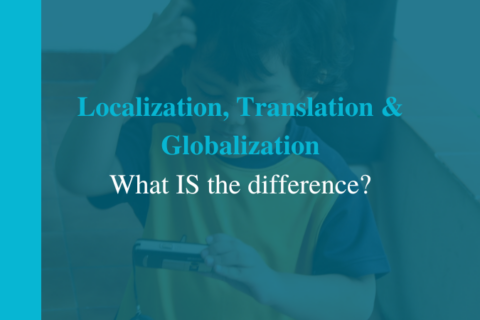What is the difference between localization and translation?

To understand the difference between localization and translation, we must first establish the difference between the terms translation, localization, and globalization, so we offer these three definitions:
- Localization refers to the adaptation of a product, application or document content to meet the language, cultural and other requirements of a specific target market (a “locale”).
- Globalization (or internationalization) is the design and development of a product, application or document content that enables easy localization for target audiences that vary in culture, region, or language.
- Translation is a subset of Localization where the service is only concerned with finding a word for word (textual) comparison between one language and another.
Localization goes a step further than translation or globalization, with an in-depth understanding of the cultural adaptation of content to a specific target audience.
If you think of globalization as targeting a widespread number of sites and locations, then localization can be thought of as its opposite: targeting very specific and single cultures and locales. This is what Starbucks did several years ago when it “internationalized” its logo. By eliminating the text within its logo, the brand is more suited for all non-English cultures, eliminating the need for translation. But, does the new logo convey what it is they do? Or, one may argue that the logo is now so general, that it does not create meaning and engagement for the target audience.
Another example of the impact and difference between localization and translation is when Apple wanted to market its MacIntosh computers to Japan. The natural instinct may have been to use their highly successful American commercials of “Mac versus PC” where the PC was represented by the actor wearing a stodgy corporate suit and displaying an old-fashioned business attitude and the Mac actor as a progressive, modern, and free-thinking man. Some marketers may have simply translated and voiced the American advertisement word for word. After all, the commercials were smashed hits in the USA, right? Fortunately, a marketing firm with cultural wisdom was hired. The concept was maintained but the script re-written for the Japanese market. In Japanese culture, it is tacky and distasteful to directly criticize a rival. It is also counter-cultural to think of companies as stodgy and out-of-touch. Therefore, in the modified script, the PCs were framed as something suitable for professional use, while the Mac was the right tool for having fun. This is a great example of the distinct difference between localization & translation.
When is it appropriate to localize content versus simply translating it? For marketing purposes? For corporate training? What are the guidelines that you can use to ensure your content is localized vs simply being translated? Global eLearning is an industry leader in localization best practices and has developed resources to enhance your localization initiatives. Download our free ebook “Creating an Impactful eLearning Localization Strategy” or contact us for a free consultation!



